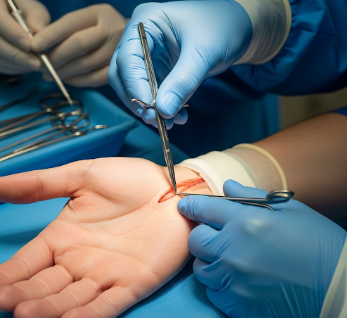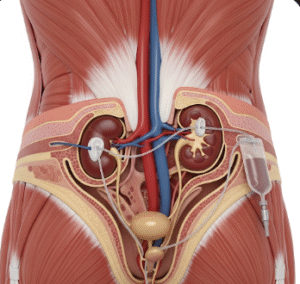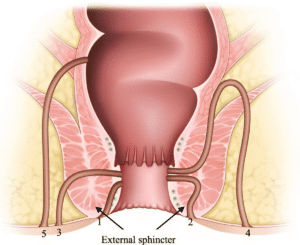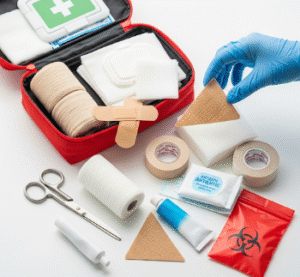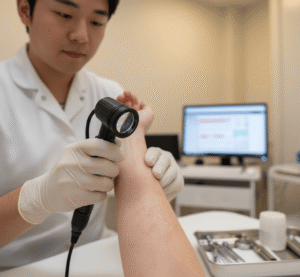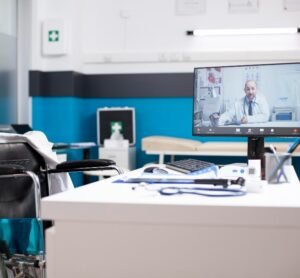Overview
Surgery for de Quervain’s disease is a medical procedure performed to relieve pain and restore function in the wrist and thumb caused by inflammation of the tendons in the first dorsal compartment. This condition often leads to pain, swelling, and difficulty in gripping or pinching objects.
In Korea, this surgery is performed in specialized hand surgery and orthopedic centers, using minimally invasive or open surgical techniques to ensure effective pain relief, preservation of tendon function, and rapid recovery.
What is Surgery for de Quervain’s Disease?
De Quervain’s disease surgery involves releasing the constricted tendon sheath to reduce pressure on the affected tendons (abductor pollicis longus and extensor pollicis brevis).
Common surgical approaches include:
- ✦ Open release surgery: a small incision is made over the tendon sheath, which is then carefully opened to relieve pressure.
- ➤ Minimally invasive release (percutaneous or endoscopic): small puncture or tiny incision with specialized instruments for reduced tissue trauma.
- ✦ Tendon mobilization: ensures smooth gliding of tendons after release.
The primary goal is to eliminate pain, restore thumb and wrist function, and prevent recurrence.
What are the Benefits?
Surgery for de Quervain’s disease provides several advantages:
✅ Relieves pain and swelling in the wrist and thumb.
➤ Restores grip and thumb movement for daily activities.
✦ Minimally invasive techniques reduce scarring and recovery time.
➤ Prevents long-term tendon damage caused by chronic inflammation.
✅ High success rate with proper surgical planning.
✦ Quick return to normal activities compared to non-surgical treatments in refractory cases.
Procedure Details
1) How should I prepare for Surgery for de Quervain’s Disease?
Preparation steps include:
- ✦ Medical evaluation: review of medical history, allergies, prior wrist injuries, and medications.
- ➤ Diagnostic imaging: ultrasound or MRI to assess tendon inflammation and rule out other wrist conditions.
- ✦ Medication adjustments: discontinue blood thinners or anti-inflammatory medications as advised.
- ➤ Fasting instructions: if general anesthesia is planned.
- ✦ Consent and counseling: discussion of procedure, anesthesia type, risks, benefits, and recovery expectations.
- ➤ Hygiene: clean the surgical area to reduce infection risk.
2) What happens during the procedure Surgery for de Quervain’s Disease?
The procedure is performed under local, regional, or general anesthesia, depending on patient preference and surgeon assessment:
➤ Step 1: Patient is positioned with the affected hand accessible and sterilely prepared.
✦ Step 2: A small incision or puncture is made over the first dorsal compartment of the wrist.
➤ Step 3: The tendon sheath is carefully released to relieve pressure on the abductor pollicis longus and extensor pollicis brevis tendons.
✦ Step 4: Tendon gliding is checked to ensure smooth movement.
➤ Step 5: Incision is closed with absorbable or fine sutures and covered with a sterile dressing.
✦ Step 6: The hand is immobilized temporarily with a splint to aid early healing.
Minimally invasive techniques are preferred in Korea to reduce tissue trauma, minimize scarring, and speed up recovery.
3) What happens after Surgery for de Quervain’s Disease?
Postoperative care includes:
- ✦ Monitoring: check for swelling, bleeding, or allergic reactions.
- ➤ Pain management: oral analgesics or anti-inflammatory medications as prescribed.
- ✦ Wound care: keep the surgical site clean and dry; follow dressing change instructions.
- ➤ Immobilization: brief use of a splint or brace to protect the tendon during initial healing.
- ✦ Physical therapy: gentle exercises to restore wrist and thumb motion.
- ➤ Follow-up visits: assessment of healing, suture removal if necessary, and evaluation of hand function.
Full recovery typically occurs within 4–6 weeks, allowing patients to resume daily activities and work with minimal discomfort.
Risks / Benefits
Potential Risks:
- ✦ Infection at the surgical site.
- ➤ Scar tenderness or minor cosmetic concerns.
- ✦ Persistent pain or stiffness in some cases.
- ➤ Rare nerve injury causing temporary numbness or tingling.
- ✦ Recurrence of symptoms in a small percentage of patients.
Benefits:
- ✅ Immediate and significant pain relief.
- ✅ Restoration of wrist and thumb mobility.
- ✅ Minimally invasive techniques with faster healing.
- ✅ Reduced risk of chronic tendon damage.
- ✅ High patient satisfaction and low recurrence rates.
Recovery and Outlook
Recovery after de Quervain’s surgery generally includes:
- ➤ Hospital stay: usually outpatient, with discharge the same day.
- ✦ Pain management: mild discomfort managed with medication.
- ➤ Wound care and hygiene: essential to prevent infection.
- ✦ Physical therapy: exercises to restore strength, flexibility, and thumb function.
- ➤ Return to normal activities: light activities within 1–2 weeks; full activities after 4–6 weeks.
- ✦ Long-term outcome: majority of patients experience complete pain relief, restored function, and minimal scarring.
When To Call the Doctor
Contact your healthcare provider if you notice:
⚠ Severe pain or swelling not relieved by medication.
⚠ Redness, warmth, or discharge at the surgical site.
⚠ Numbness, tingling, or weakness in the thumb or wrist.
⚠ Difficulty performing daily activities despite recovery timeline.
⚠ Recurrence of pain, swelling, or restricted movement.
Best Korea Option / Process
Korea provides world-class surgery for de Quervain’s disease with:
- ✦ Expert hand surgeons and orthopedic specialists skilled in open and minimally invasive techniques.
- ➤ Advanced imaging for precise diagnosis and surgical planning.
- ✦ Minimally invasive and outpatient procedures for faster recovery.
- ➤ Comprehensive pre- and post-operative care including splinting, pain management, and physical therapy.
- ✦ Safe and effective procedures for international and domestic patients.
- ➤ Multidisciplinary support including nursing, physiotherapy, and counseling for optimal recovery.
Korea ensures patients receive safe, precise, and effective treatment for de Quervain’s disease with minimal complications and excellent long-term outcomes.
Highlights of Surgery for de Quervain’s Disease in Korea
- ✅ Minimally invasive techniques for reduced tissue trauma.
- ➤ High success rate with low recurrence.
- ✦ Restoration of wrist and thumb mobility.
- ➤ Comprehensive pre- and post-operative care.
- ✅ Rapid recovery and minimal scarring.

